By: Joel Cox ’16
I’ve watched countless YouTube videos of people going out into harsh mountain environments, but the sheer rock faces with snowy summits always seemed inaccessible. I had only experienced mountains in New Hampshire and New York that never went above 6,000ft and were more defined by the number of trees than the exposed climbing. I was understandably awed and in disbelief the first time seeing the Himalayan mountain range with peak after peak slicing through the sky and the exposed rock looked as unconquerable and challenging as I had hoped. It felt like being in those videos I would watch. Every day the pre-dawn view of the mountains was consistently breath-taking.
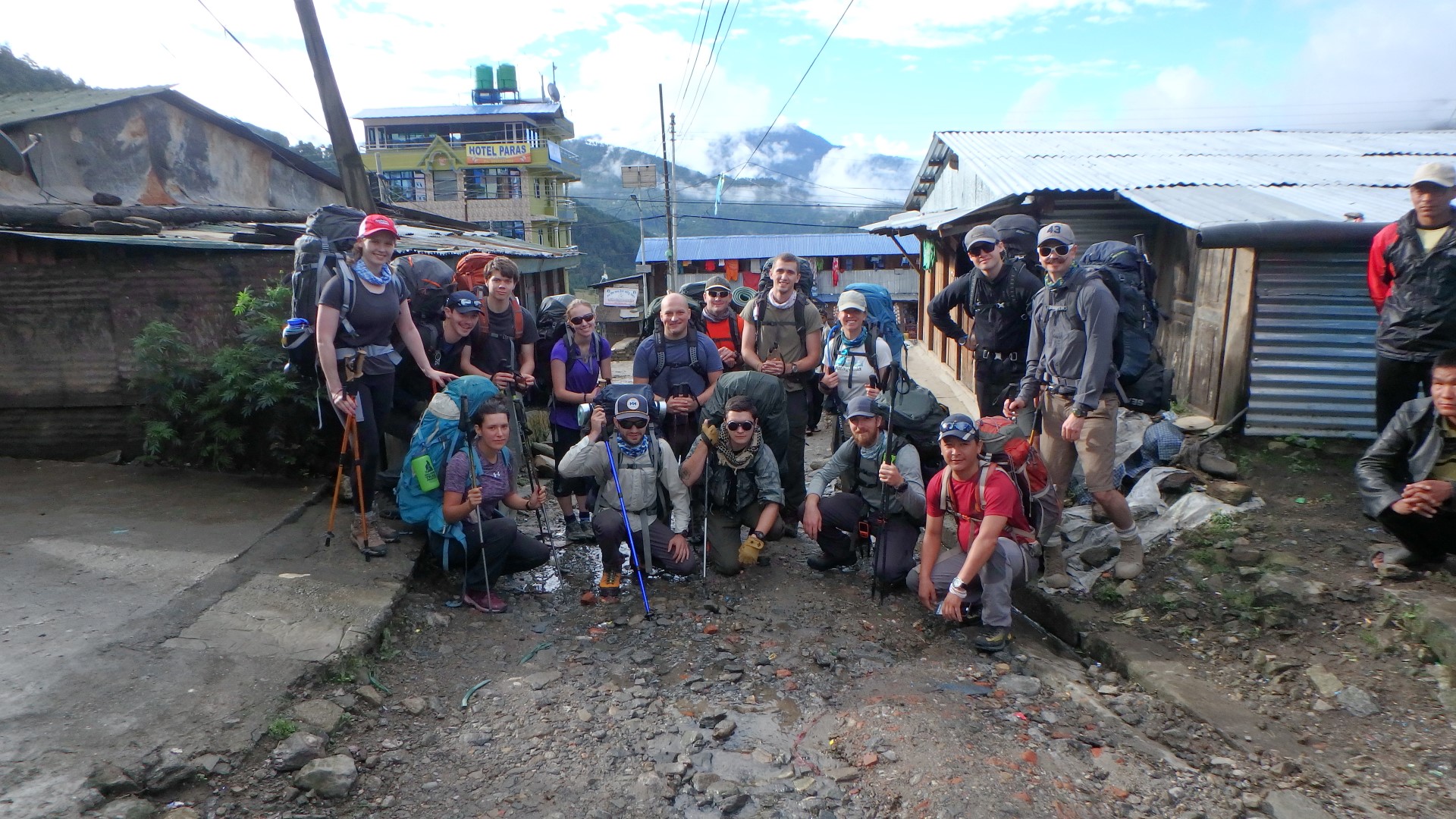
The Nepal Crew
Throughout the trip, the surrounding landscape progressed from rainforest to coniferous and then eventually to a more tundra-like vegetation as we entered the Sol Khumbu region. As the environment became less accommodating to our human needs, we followed suit and adapted our appearance to be less human as well. We’d cover our eyes with fully reflective “glacier glasses”, don heavy mittens as opposed to gloves, cover our mouths with buffs, and lace up our pointy crampons. After also putting on our heavy, misshapen parkas we appeared, like our environment, alien and aggressive.
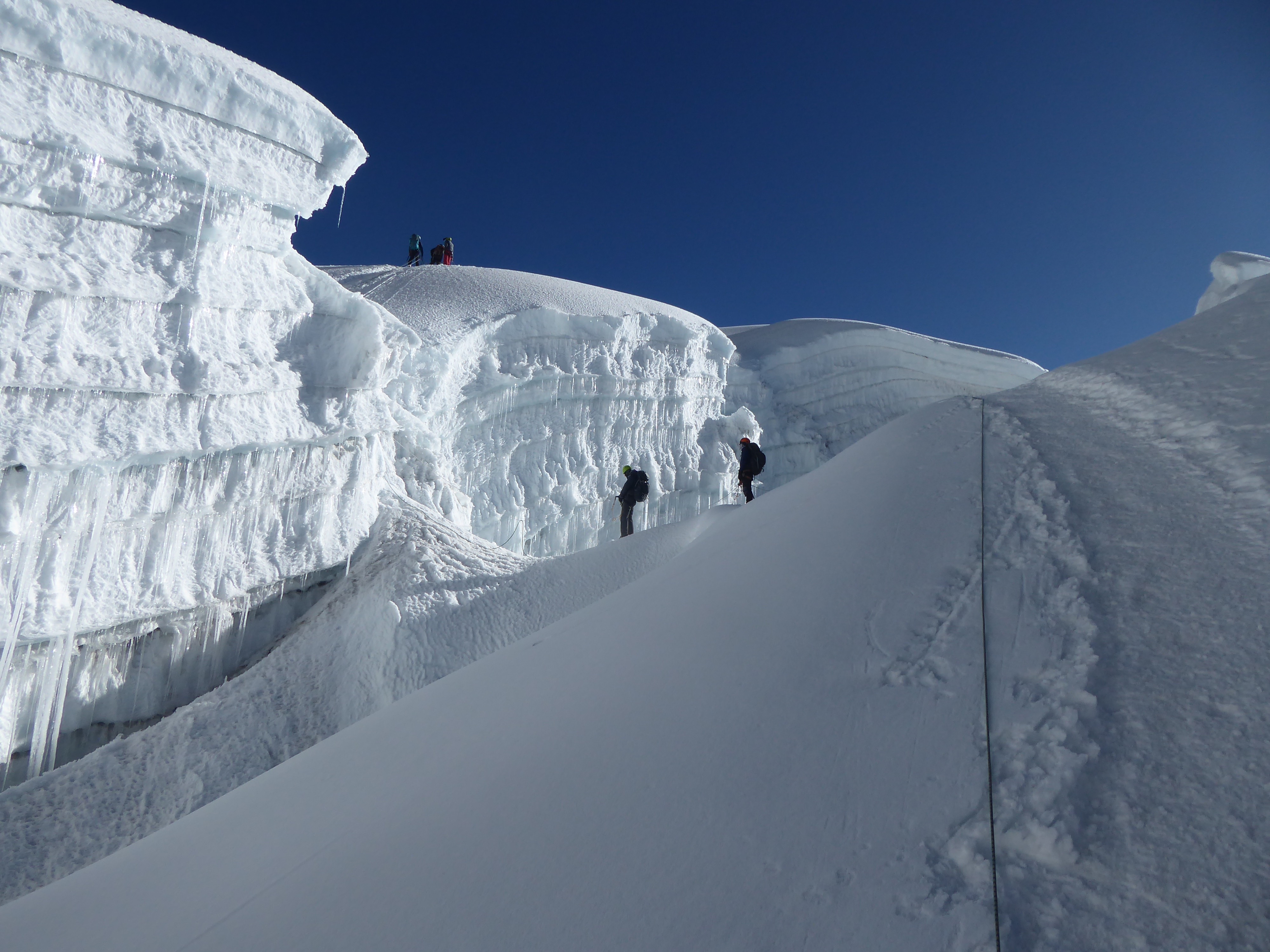
Glacier travel to Island Peak
For a time, I could “handle” the consistent discomfort and even abstractly appreciate the inhospitable ambivalence of the landscape. I loved the feeling of awe of God’s creation and the perspective and humility that it forced upon me. We summited Imja Tse (Island Peak), and I was energized by the challenge and the prolonged exposure to both the weather and the landscape. Once we returned to our camp and began travelling to our next objective, however, the exhaustion began to set in. I had lost a good amount of weight from not being able to eat enough and I was also losing my comfortable, pensive, objective outlook on the situation.

Taking a break before the final push
A book I read recently described beauty as danger + distance. For example, I can appreciate a storm if I’m far away or safe inside a house. I also can go for walks on the beach and enjoy the beauty and power of the ocean as I stand on the shore. However, if I actually go out into the ocean, or step outside my house into a storm that “beauty” quickly becomes personal and costly. That raw experience often brings out equally raw emotions and character traits that stay hidden in more comfortable situations.
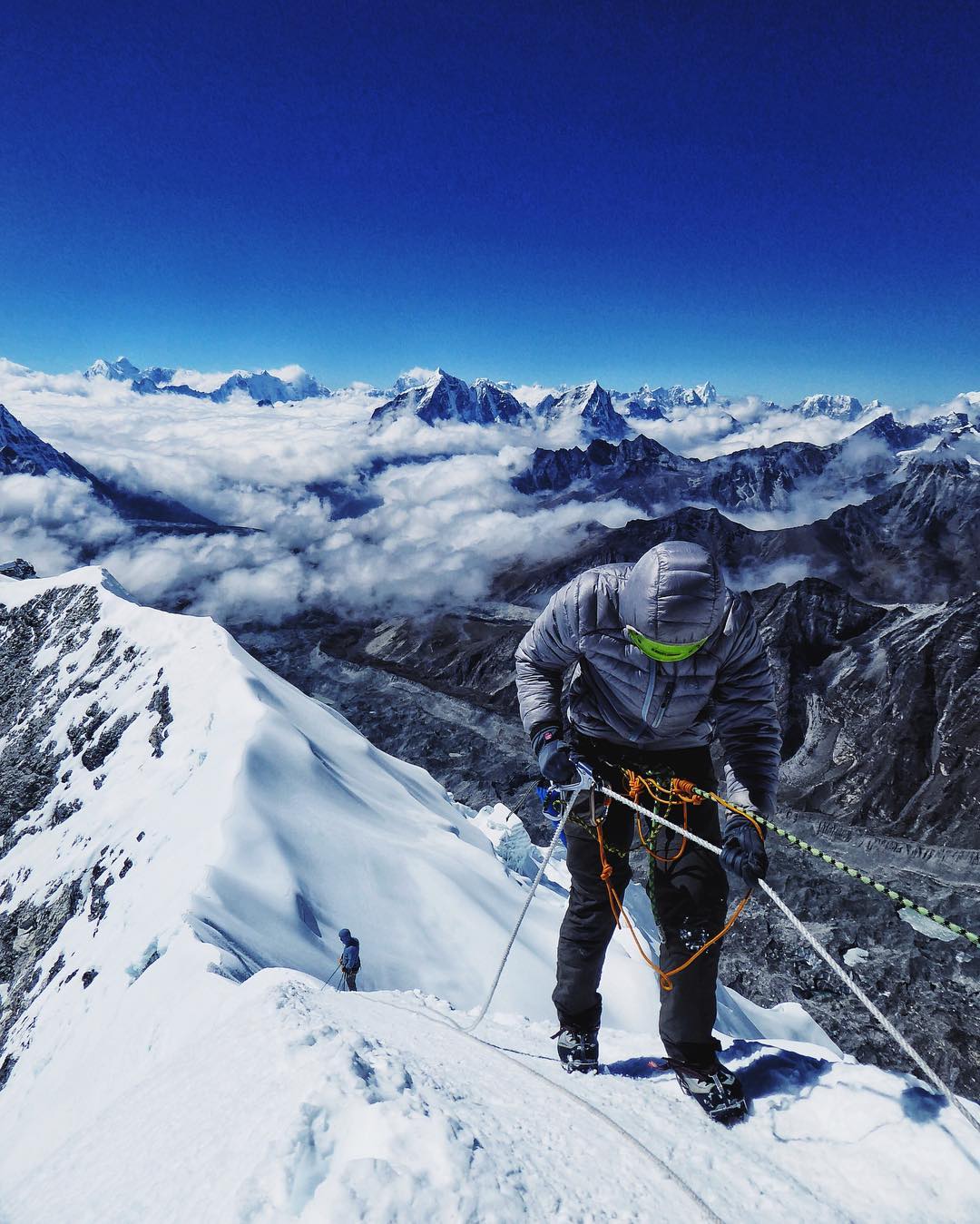
Joel finishing the last bit of Island Peak
As we slowly returned to lower elevations and went back into the rainforest, I was so grateful to see mud instead of dust, and older village women instead of hardened, hairy alpinists. The air honestly felt heavy with oxygen and toward the end of the trek our whole group ended up covering a consistent 4,800ft ascent with only a few scattered 5 minute breaks. Dropping elevation felt like walking through your front door after a long trip and you can feel stress and tiredness drop off of you. We shed layers, took off our glacier glasses, and started joking and hanging out again.
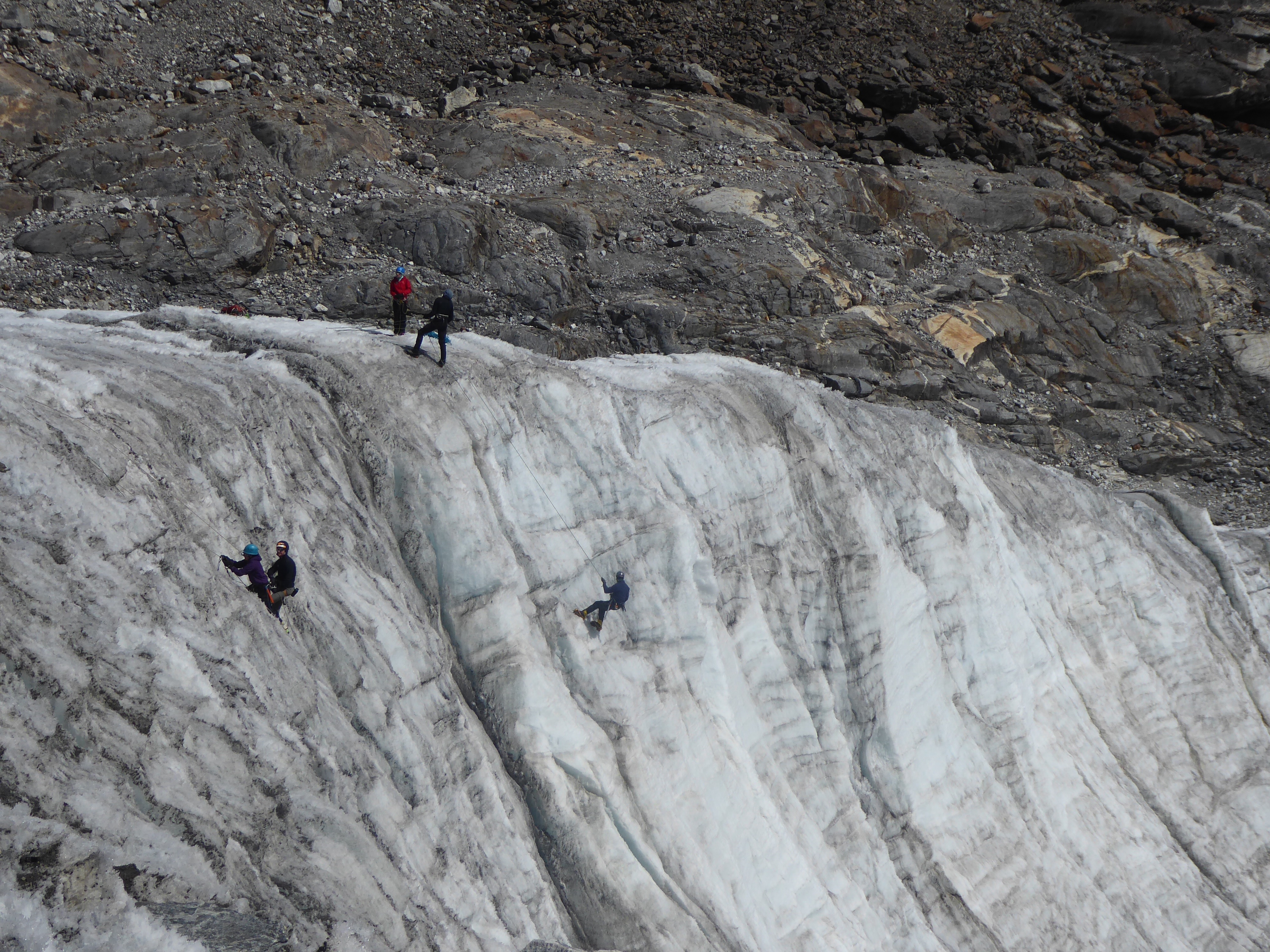
Ice Climbing on glacier
We finally made it back to Kathmandu, and after eating whole pizzas, ice cream, and sleeves of Oreos, I felt myself relax and let go of the “survival mode” mentality. It reminded me of a story in the La Vida journals about a man who tried to copy a couple that walked out into the rain and didn’t hunch their shoulders or try to avoid the rain. They just accepted it and walk calmly and relaxed. They were able to differentiate between the reality of discomfort and choice of suffering. I feel like I’ve had to learn this lesson over and over, but I’m grateful to learn it again in another context.

Crossing a crevasse
I am glad to have gone out into the mountains and that I had to face physical and personal challenges. Maybe next time I can relax some and remember to lean into gratitude and appreciation instead of just trying to minimize my own suffering. Hopefully someday I could embody that mentality: “It was simply rain falling as rain should, and I, another phenomenon of nature, was sharing the space in which it fell… I got no wetter than I would have otherwise, and if I did not actually enjoy the wetting, at least I was free of my own tension. I could even smile” (Tom Robbins, Book of Readings).
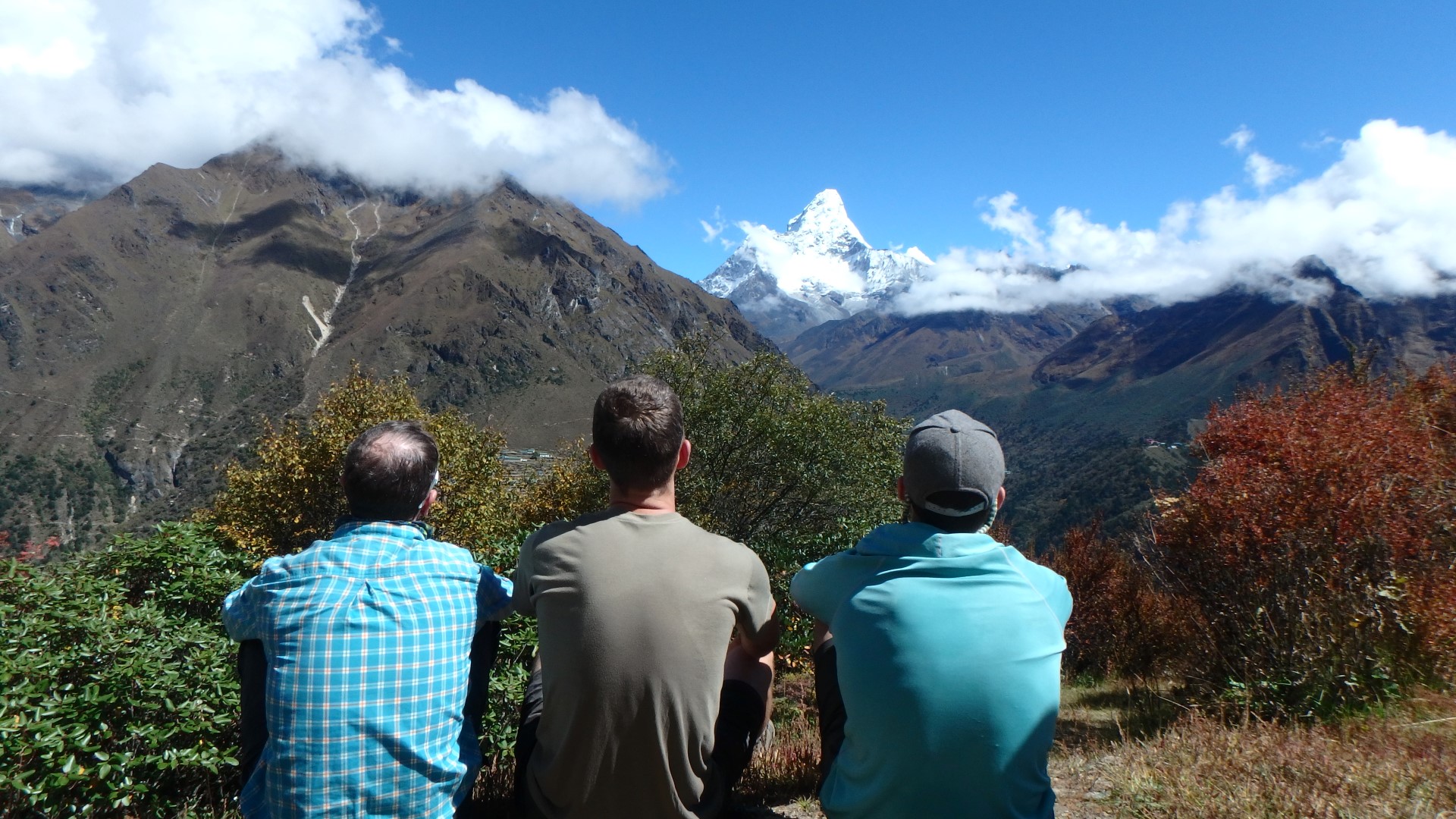
Contemplating Ama Dablam for next trip

Joel’s account made me feel the discomfort, fatigue and beauty of his trip. At my age I am so glad to live vicariously through the more adventurous, especially one who can recount the journey so well to communicate the struggle and rewards of the trek.